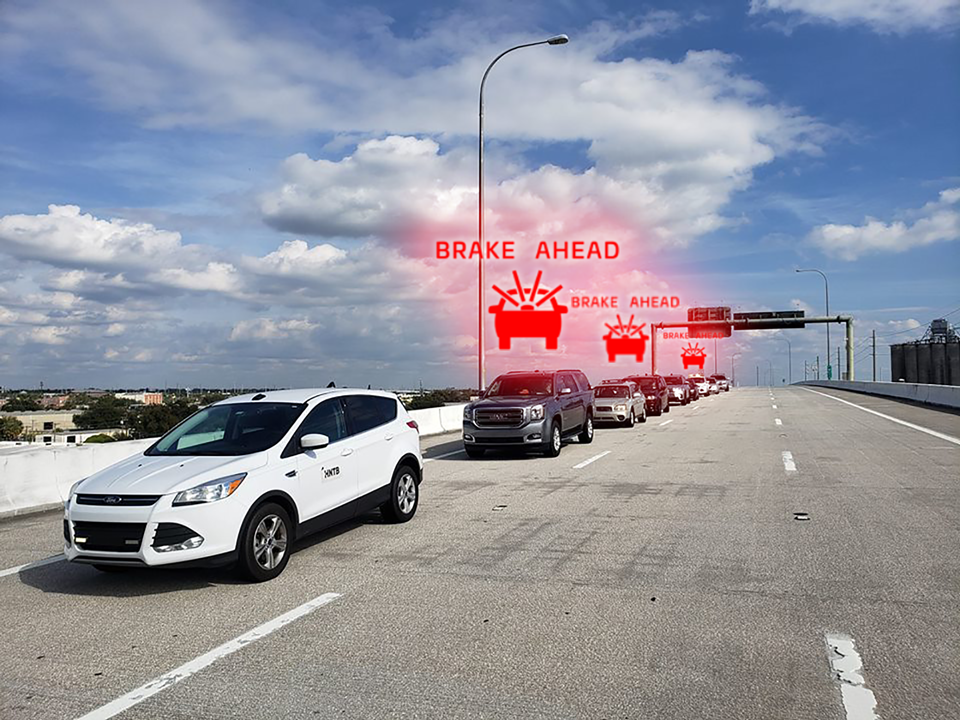Over the course of 18 months, the Tampa Hillsborough Expressway Authority has gathered 16 billion observations from its Connected Vehicle Pilot Program.
Now, it is focusing on getting car dealerships on board to install the technology meant to prevent traffic accidents, cut down on fossil fuel use and make the roadways safer.
It is calling on volunteers to sign up who are willing to meet the following criteria:
- Regularly drive on the Selmon Expressway, which THEA operates;
- Have the monitoring technology installed in their vehicles;
- Complete a series of surveys.
In return for volunteering, drivers get $550 in toll rebates during the year-long pilot.
“Right now, what we are looking at is how do we get the auto manufacturers to take part and how does it work,” said Bob Frye, director of planning and innovation for THEA. “With the first part [of the study], which started in 2015, we found out we can put the technology in drivers’ cars, so they have the best information to make decisions. But it is almost impossible for a road agency like ours or the Department of Transportation to put enough of these units out in the corridor to make a difference.”
That is why THEA is working to get more vehicle manufacturers on board, he said. Hyundai, Honda, Toyota and others are signing up. Frye said it needs to eventually have 60-70% of vehicles on the toll road with connected vehicles before it will have any real effect.
“This is about how we can get the safety to the people working with the auto manufacturers, so we get enough out there to make a difference,” he said.
Already, THEA has learned a lot about signal timing systems, which the agency shares with research universities and vehicle manufacturers so they can better design vehicles for the technology.
Other findings so far:
- The technology has alerted drivers of 14 wrong-way entries, which could otherwise have been catastrophic.
- The connected system warned drivers of several potential crashes with downtown Tampa trolleys.
- In one month, the technology sent out 1,280 speed advisories to 500 equipped vehicles going too fast on exit ramps.
- 325 of the volunteer drivers have connected technology in older cars.
- Two-thirds of participants were satisfied with their participation in the pilot.
- 66% perceived the technology as a safety benefit.
- 56% believe the technology helped reduce road congestion.
- 54% felt it made their commute less stressful.
According to the U.S. Department of Transportation, connected technology will eventually go in trucks, cars, buses, trains, roads and other infrastructure, where smartphones and other devices will “talk” to each other to share information for safer commuting.
“Cars on the highway, for example, would use short-range radio signals to communicate with each other so every vehicle on the road would be aware of where other nearby vehicles are. Drivers would receive notifications and alerts of dangerous situations, such as someone about to run a red light as they’re nearing an intersection or an oncoming car, out of sight beyond a curve, swerving into their lane to avoid an object on the road.”
The goal is that connected vehicles could eventually dramatically reduce the number of serious injuries and fatalities caused by accidents on roads and highways. While anti-lock air brakes and airbags have helped significantly increase the number of crash survivors, the U.S. DOT is shifting its focus to helping people prevent crashes from occurring in the first place.
According to the National Highway Traffic Safety Administration, more than 5 million crashes occur annually on U.S. roads. Of those crashes, 30,000 people die and many more are seriously injured. And according to the Centers for Disease Control and Prevention, vehicle crashes are the leading cause of death among young children and young adults.
“Another NHTSA study of connected vehicle technologies has shown that they have the potential to reduce up to 80 percent of crashes where drivers are not impaired, which would save a significant number of lives and prevent millions of crash-related injuries every year,” according to USDOT.




























